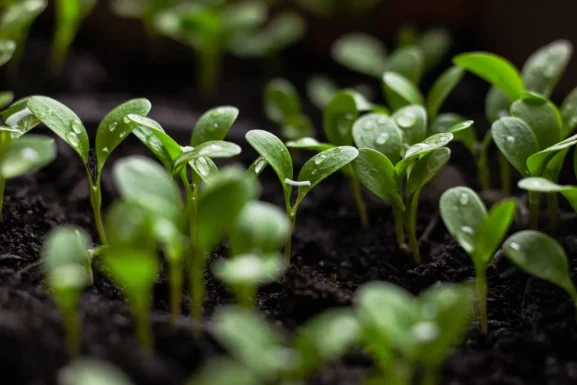Training A Puppy – Fundamental Facts
Not many people are aware that a lot depends on the breeder for the first and foremost period of training for a puppy. From the day it’s born to around 5 weeks is normally out of your hands unless you’re a breeder. It is of benefit if you have a close relationship with the breeder who can inform you when a litter is expected – that way you can make a better choice from the pup litter at the whelping box. It will also allow you to have some background knowledge of the bitch and the sire parents.
The finer levels of obedience training and puppy potty training commence after this period. For instance, during the first 3 weeks little is learned by puppies in general. They are in survival mode only. Their priorities are breathing, snoozing, ensuring they know where mom is and of course suckling. In the forth (approximately) week your puppy will begin to notice things very astutely and their ability to absorb images and regular objects and occurrences becomes exceptional. Of course, this is the period where the litter box becomes boring because there is so much to explore and learn. This is a profound learning period in the puppy’s life. Whether the experience is good or bad, any experiences here will set the behaviour platform for later. This is when you can work with the breeder to enhance the outcome of a well behaved and happy dog – circumstance allowing.

As you puppy is now learning to leave its waste in different corners of the home, this is a good time to introduce crate training and some other areas of behavioral training. You can use a wire crate or dog basket and place this in the whelping box or in a similar but easily accessed location. Line the crate with soft material like towels or old blankets for sleeping comfort. Organize some newspaper or similar around the crate. Usually when the puppies continue their exploring and sniffing, they will do their droppings on the paper and sleep only in the crate or basket.
Four weeks is also a good time to continue grouping the pups and this can include handling as well. You can address the puppies as a group and you can hold them gently in position (individually) and practice the ‘stay’ command every so often – not too much! Hold them upright gently as you do this and make sure it’s a game and enjoyable for both you and the pup. Don’t be too disciplined or tough. Remember, they have just entered the world and you want friendship for the best obedience outcomes, not fear. This can be the introduction to the ‘come here’ command and other basic commands. This preparation will be well worthwhile which you will appreciate later. It will also save some frustrating issues.

Canine Independent Thinking
Try not to do the work for the pup. In almost all circumstances the puppy will take an easy way, especially if it can sense that you will do most of its tasks for it and still get a reward. Praising must continue but treats can slowly be removed over time. Physically pushing or pulling the pup doesn’t help the training procedure and can undo a lot of the good training you’ve accomplished.
Avoid Penalizing the Puppy
You want the puppy to be keen to obey simply just to please you – not because it fears you. You will experience excitement from the pup at this stage and that will come from treats and encouragement you can use for rewards. Try not use any negative style gestures except of course the word ‘No’ and one flat raised hand for visual affect from a distance when there is something that you don’t want the pup to do. If and when the pup stops when you make these commands, it should also be rewarded with a treat or praise. Physical punishment simply won’t work medium to long term and can cause other misbehaviour issues you simply don’t want.
Continuity of Training & Frequency
When you are house training your puppy, ensure you continue to use the same gesture all the time. Also ensure that others in your household use the same training gestures and commands. Continuity breeds continuity! Behavioural training is based around this parameter and allows the pup to understand when a correction is taking place. With help from someone else, you can even have your puppy learn to sit at the command of your voice even though it can’t see you. This is undertaken with a helper in another area close by but not within visual range. The puppy is assisted to a sitting or squatting position each time you use the command ‘sit’. Accordingly the puppy is praised for doing so each and every time and can also receive a reward.

Praise and Relevant Rewards
I have used the term reward a number of times above and there is a method behind this which is paramount to your success and the end result. Treats and small relevant snacks are what you should use to assist you in gaining ground with your training. The reward must be immediate following the puppy’s correct response to your command. Emphasis on the word immediate! Then your pup knows what it did correctly. You should not keep this up for along time either because you puppy will get fat and can become disinterested too.
Don’t Overdo It!
When training your puppy dog, ensure you don’t exceed say 15 minutes and no less than five minutes. Like some people, puppies have short attention ability. Intervals of 3 – 4 times a day should do it. The training will be more affective this way.
Repeat the task
When you have decided on a command you would like to teach your pup, make sure you continue the exercise until you have achieved success before you stop training. Once you have finished, reward the puppy and come to a halt. Your appreciative puppy will learn to do things expediently and save you time as well.

The Patient and Confident Trainer
Your patience in this exercise of training is paramount. If you’re impatient as a person then that’s not the pups fault. Learn to be patient during the training process or suffer disappointment. Equally important is your level of confidence. It is a well known fact that animals can sense when their master or handler is lacking confidence. You can gain some tips from the breeder in this area or have them present for the first bout of training to help boost your confidence. Fortunately confidence in animal training comes quickly.
Canine Training Simplicity
Always start your puppy training with the easiest puppy training techniques first. Just do a one a day to begin with. Sophisticated commands can come later and require a little more reading and practice by the trainer than this article permits. Just keep it simple for now with the knowledge that you are setting the ‘doggy’ ground rules for now.
Communicate
The tone of your voice is essential for long term master dog obedience and will ensure that your voice will always remain the more dominate in confusing environments. You will notice that when you’re present the puppy will observe your facial expressions – which is good but you also want your commands followed when you are not visible. Be pleasant when you communicate
Time to Keep Your Distance
Up until the end of a three month period the puppy will need some type of reassurance when undergoing training. Patting and praising will be the main elements during this period. This will build a relationship and a comfort zone with you and your puppy. As time moves on through the training process, introduce more and more obedience methods without touching your dog or pup. Your control must eventually be voice based without a leash or physical assistance of any kind.
I hope you use these tips in the best interest of your relationship with your puppy or puppies as the case may be. Remember that punishment rarely works and is frowned upon by the best and most well known and successful trainers. The sky is the limit to what behavioural outcomes you can achieve if you use all of the above and learn more. You will soon see what I mean. All dogs, pedigree and mongrels can be trained – remember that too! Some people will try to tell you different but that has been my experience.
Don’t refrain from improving your knowledge with guides and books either because what I have told you is simply the tip of the iceberg – there is much more canine training knowledge that will make your relationship with your pup continue to grow.



